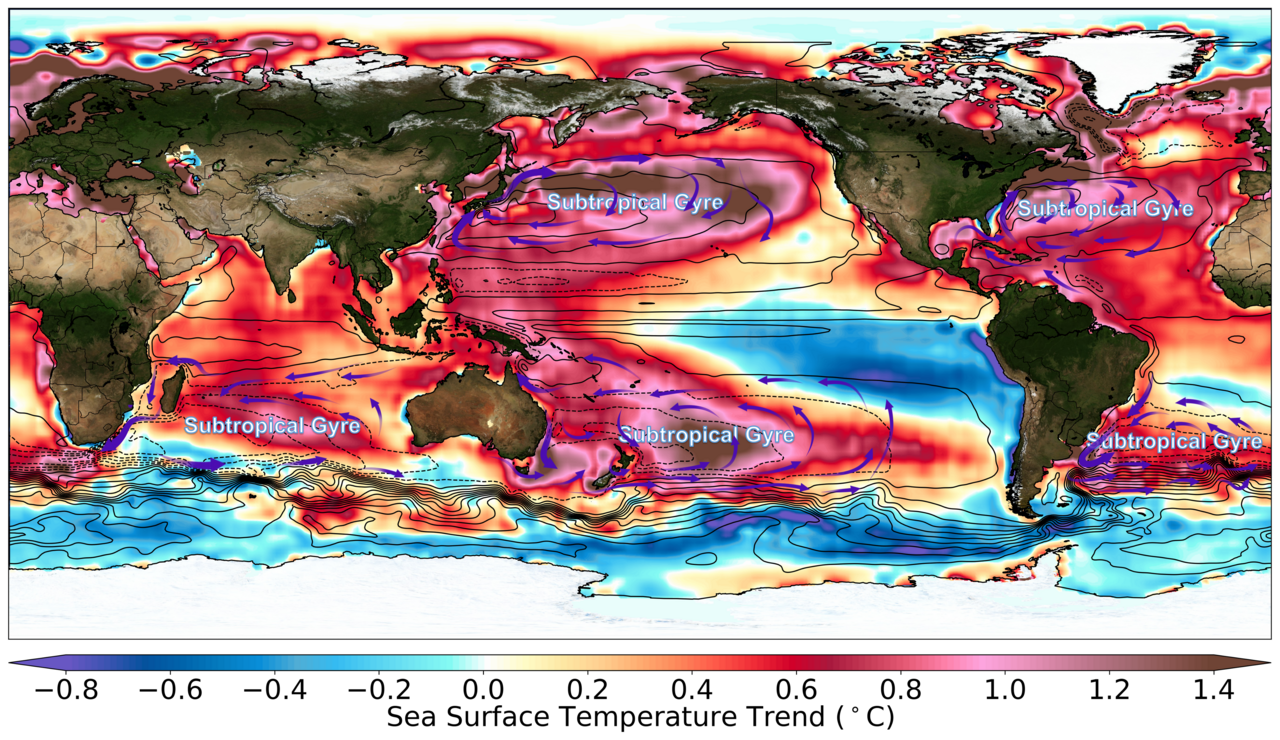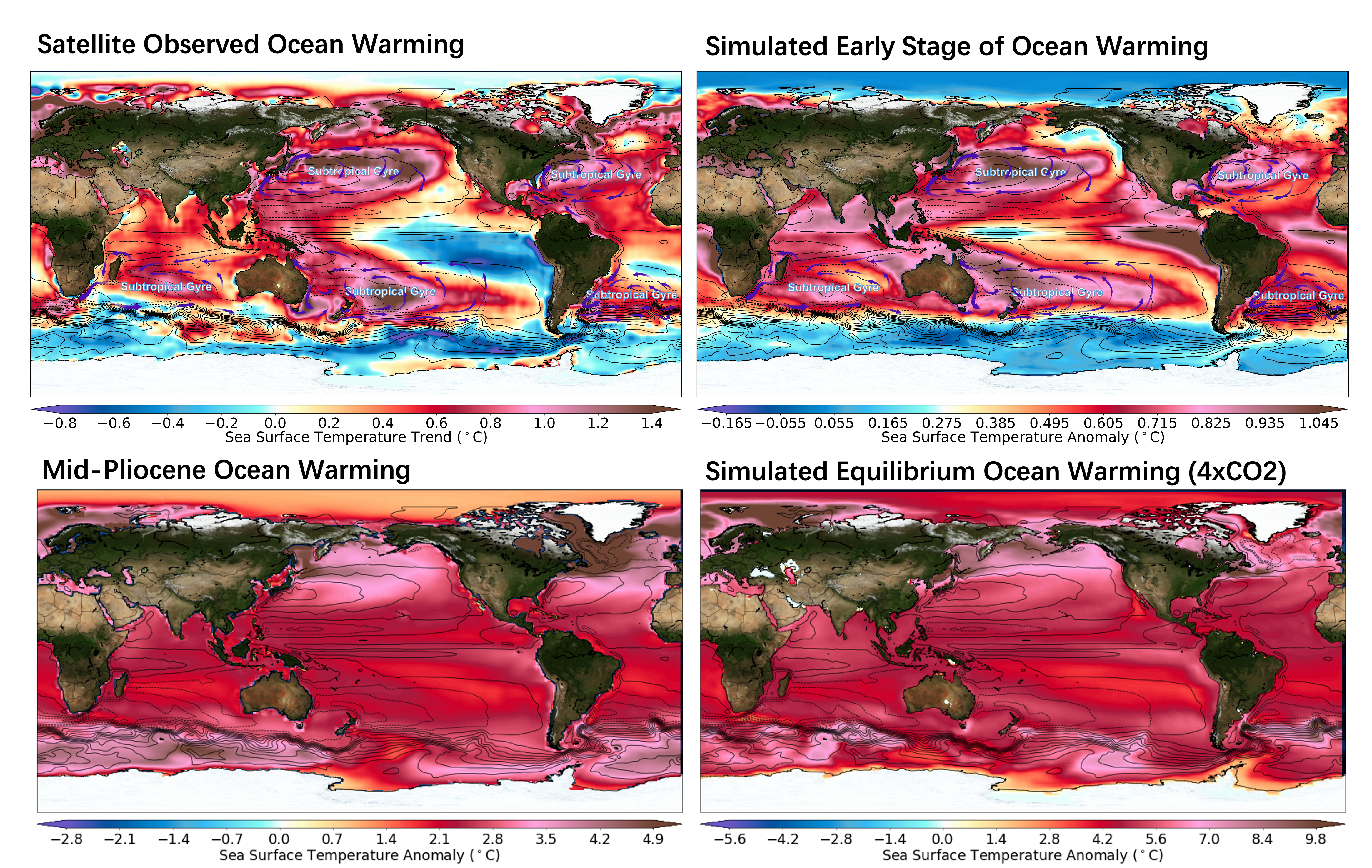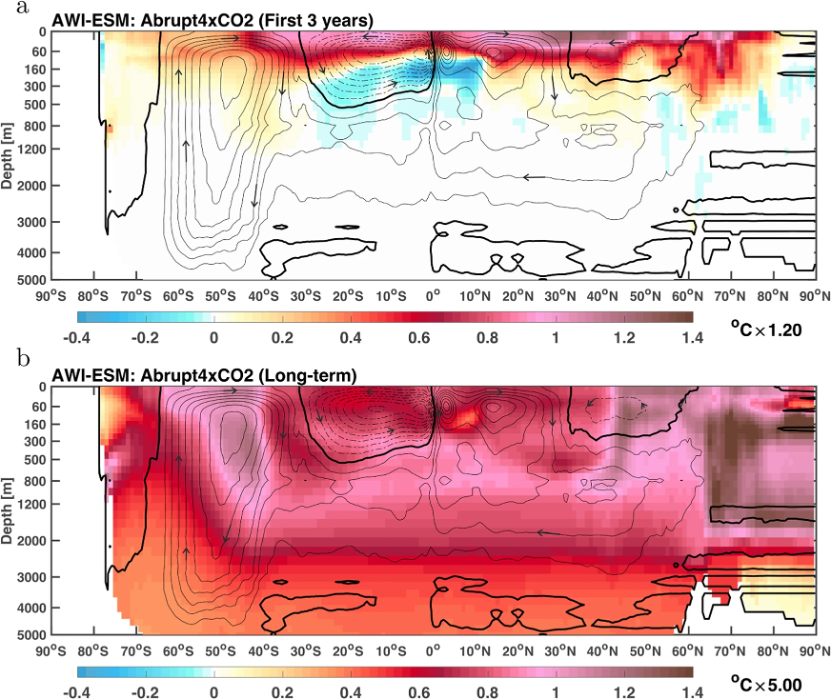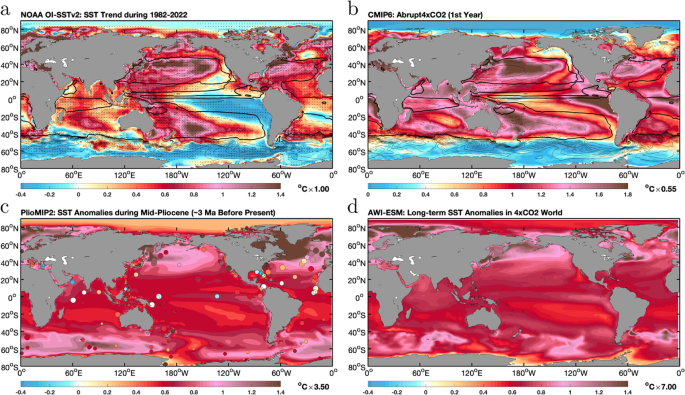Early stage of global warming
Published in Earth & Environment

The satellite observed sea surface temperature recently reached a milestone temporal coverage of 40 years. This data provides a good opportunity to evaluate the extent of the anthropogenic warming. It documents a strong warming of the subtropical ocean and a cooling of the tropical eastern Pacific Ocean. This pattern was widely interpreted as a manifestation of the Pacific Decadal Oscillation. However, we find that the observed warming/cooling pattern is dynamically consistent with where the surface water converges (subtropical gyres, downwelling) and diverges (subpolar gyres, upwelling), therefore it can be attributed to ocean dynamics.

We show that the observed ocean warming pattern belongs to a forced response, which only manifests itself at the very early stage of CO2 forcing when the heating anomaly is limited in the upper ocean. Long-term warming of the subpolar ocean, where surface water connects the deep ocean, will have a greater amplitude than it would on the subtropics.

Our results point out a serious fact: even though the ocean surface temperature set another new record high this year, the current warming is still in its infancy. Ocean temperature will keep rising for thousands of years, even if greenhouse gas concentrations stop rising right now. The committed, but delayed warming over the subpolar ocean will have strong impact on the ocean-atmosphere circulation and has the potential to cause a sea level rise of more than 10 meters.
References:
Yang, H., Lohmann, G., Stepanek, C. et al. Satellite-observed strong subtropical ocean warming as an early signature of global warming. Commun Earth Environ 4, 178 (2023). https://doi.org/10.1038/s43247-023-00839-w
Related News:
AWI Press Release:Intensive Subtropical Ocean Warming is Only the Beginning
Follow the Topic
-
Communications Earth & Environment

An open access journal from Nature Portfolio that publishes high-quality research, reviews and commentary in the Earth, environmental and planetary sciences.
Related Collections
With Collections, you can get published faster and increase your visibility.
Geology of the Moon
Publishing Model: Hybrid
Deadline: Jan 31, 2026
Drought
Publishing Model: Hybrid
Deadline: Mar 31, 2026



Please sign in or register for FREE
If you are a registered user on Research Communities by Springer Nature, please sign in